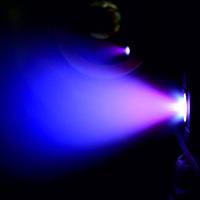Employees of the Laboratory of Plasma Engines of the Institute for Laser and Plasma Technologies (LaPlas) of the MEPhI, together with representatives of the Sputniх company (https://sputnix.ru), began firing tests of a propulsion system based on an ablative pulsed plasma thruster with an external magnetic system.
A full-fledged propulsion system, that is being tested, includes, in addition to the engine itself, compact high-voltage converters that provide power to the engine from the satellite's low-voltage on-board network, as well as an electronic control board that receives digital commands and, on their basis, controls all processes inside the installation.
According to the plans of the developers, two nanosatellites of the CubeSat 3U format, using propulsion systems of this type, will be assembled next month. The launch of satellites into low-earth orbit is expected to happen next year. Then the main flight tests of the engine will take place.
The plasma propulsion system, called VERA (Volume-Effective Rocket-propulsion Assembly), will be one of the first in the world suitable for installation on spacecraft of such a small (mass less than 4 kg) format as the CubeSat 3U. The small size and mass of the developed engines will make it possible to create constellations of dozens of nanosatellites in orbit.
Despite their small size, such satellites will be able to solve many problems that were previously solved only with the help of much larger and more expensive vehicles. Nanosatellites can engage in remote sensing of the Earth (ERS), including operational detection of natural disasters, collect data on the movement of ships and aircraft, support the so-called "Internet of Things" (IoT), providing communication with remote autonomous meteorological and oceanographic stations, etc. etc.
However, until now, the developers of nanosatellite constellations have faced the problem of the lack of sufficiently compact propulsion systems that would allow the satellites to take and then maintain the necessary positions in the orbital plane. With the VERA engine, this problem will be solved. That will give a powerful impetus to the development of low-cost satellite systems of the next generation.
Another important problem that the new plasma engine will help solve is the problem of space debris. Typically, nanosatellites can remain in orbit for more than ten years after completion of their service, before braking on the upper atmosphere clears them out of near-Earth space. All this time, there is a threat that an already exhausted nanosatellite will crash into some operating, possibly manned, apparatus. But the nanosatellites equipped with engines can independently lower the orbit height at the end of their life, thereby reducing the time before combustion in the upper atmosphere by 2-3 times.






